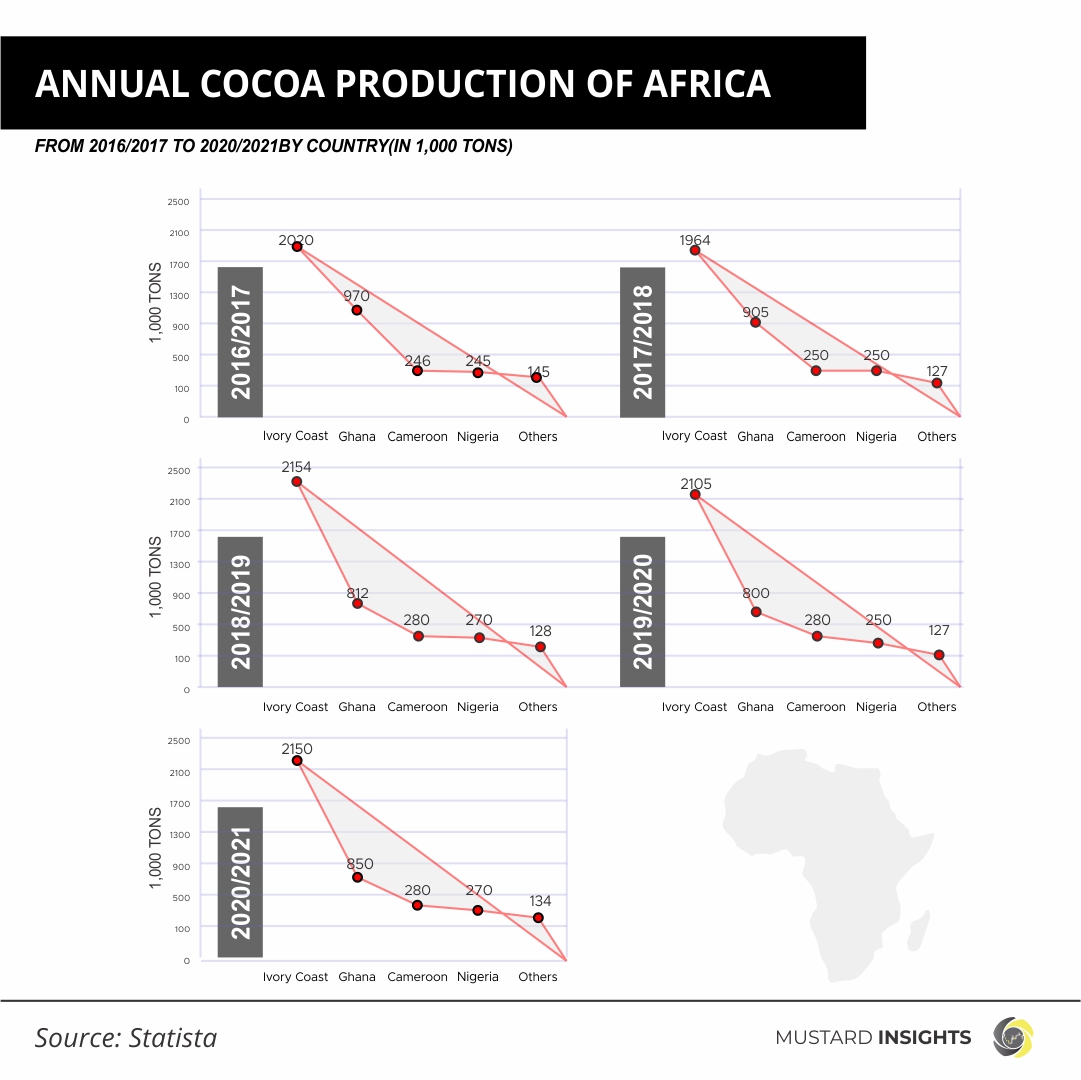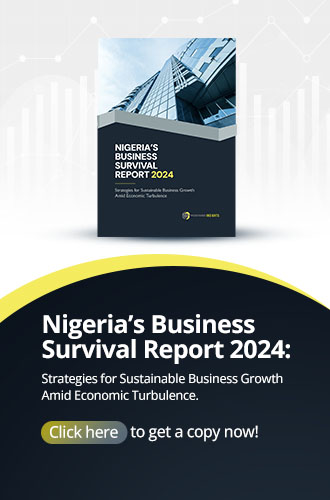Africa is a leading exporter of cocoa beans, most of which comes from Cote d’Ivoire with about 3.9 million metric tonnes of cocoa beans produced in Africa in 2020. This slightly increased from the previous year’s production of 3.8 million metric tonnes.

Africa is a leading exporter of cocoa beans, most of which comes from Cote d’Ivoire with about 3.9 million metric tonnes of cocoa beans produced in Africa in 2020. This slightly increased from the previous year’s production of 3.8 million metric tonnes.
Cocoa is a cash crop with a high global demand because of its many uses in food treats, such as chocolates, beverages, flavoring, medicinal purposes and special planting conditions. Since cocoa can only grow economically in the tropical and subtropical regions along the equator to about 20 degrees North and South of the latitude, it is a valuable commodity in the global market. The crushed shells of cocoa beans is useful as a low-cost, organic fertilizer to help in minimizing erosion, conserve moisture, and suppress weeds.
While the raw cocoa barely gets processed into end products and consumed in small quantities in the countries of production, there is a strong demand for raw cocoa and cocoa products in both the import and consumer countries.
According to the data from Statista, almost 70% of the world’s cocoa originates from West Africa; largely produced by smallholders. Cote d’Ivoire ranks as the major producer of cocoa in Africa, followed by Ghana, Cameroon and Nigeria.
The challenge facing the cocoa sector is most cocoa farmers are poor with inadequate living conditions. The rate of poverty among most cocoa farmers means they cannot afford adequate labour costs and have to engage in child labour practices. This exposes children to the hazardous tasks of opening cocoa pods with sharp tools and spraying of pesticides.
Besides these challenges, are the inability to have access to capital and infrastructure. Deforestation and climate change (fluctuations in rainfall and high temperature) are also major obstacles to cocoa production in Africa. The chart depicts the annual cocoa production of Africa for 2017/2018 to 2020/2021, broken down by country. According to the report, Cameroon produced approximately 290 thousand metric tonnes of cocoa in 2020/2021. Cote d’Ivoire was the leading producer that year with just under 2.5 million metric tonnes of cocoa produced.
Total cocoa production in Africa 2017/2018 was slightly over 3.6 million metric tonnes. This declined just below 3.5 million metric tonnes in 2018/2019 and increased to levels around 3.6 million metric tonnes the following year. In 2019/2020, total cocoa production was 3.4 million metric tonnes and in 2020/2021, total cocoa production reached 3.6 million metric tonnes..
Cote d’Ivoire and Ghana cocoa productions account for two-thirds of the world’s cocoa production and accounts for 61% and 66% of family income, respectively.
Thoughts?
We won't share your email address. All fields are required.
